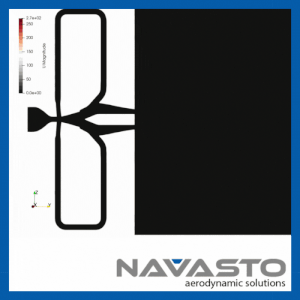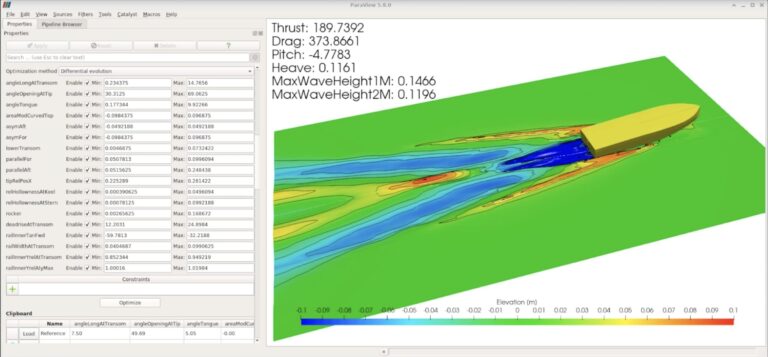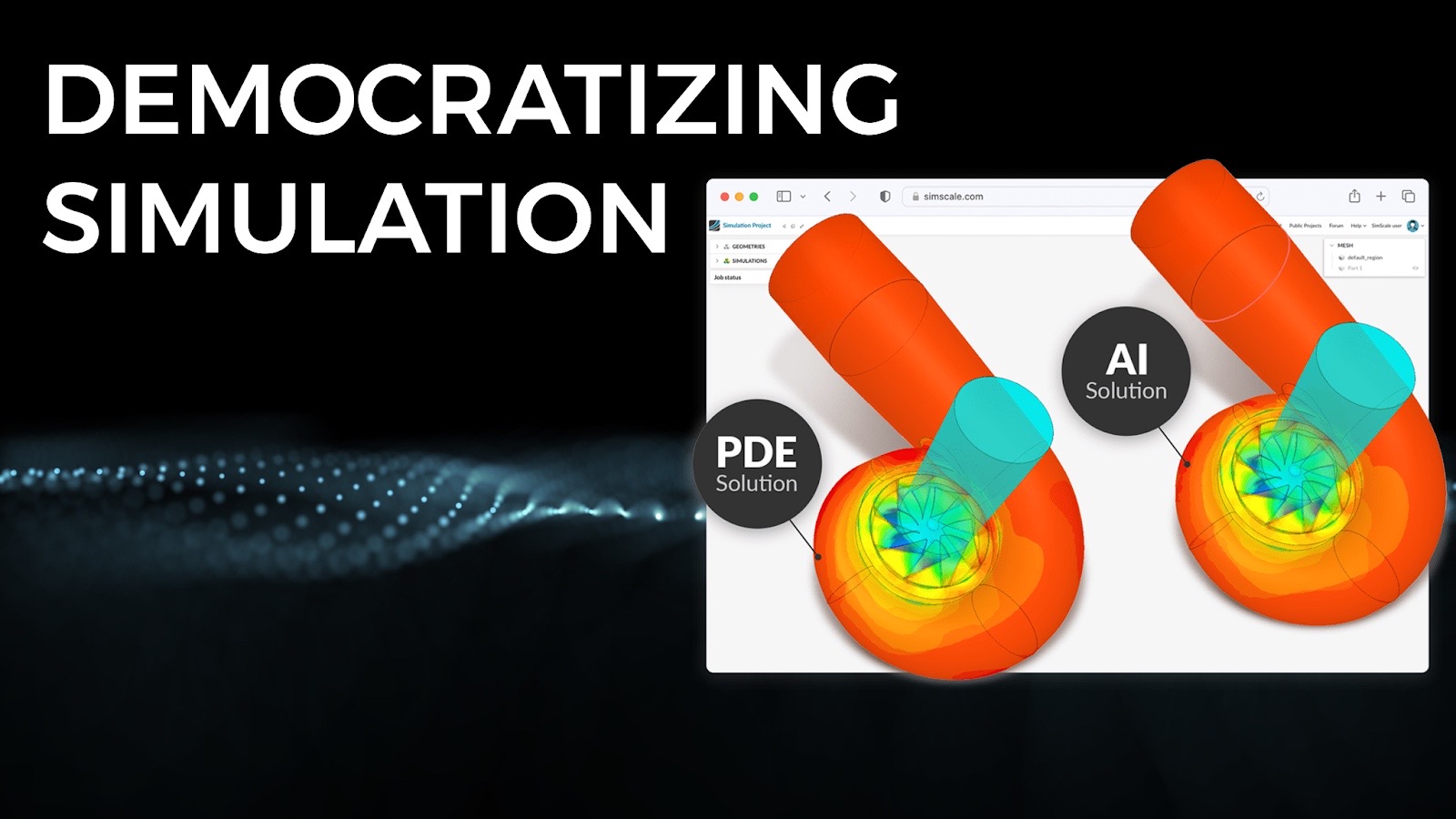The Power of Democratizing Engineering through Left-Shifting and Simulation-Driven Decisions
Engineering and product development is undergoing a change that will change the way engineers, designers, and non-experts work together. By interconnecting design and simulation, engineers can develop faster, smarter, and more performant products that meet customer needs and regulatory requirements.
To speed up design decisions and processes, making physics-based insights more accessible to everyone and prioritizing them earlier in the development cycle is crucial. This is the left shift, which aims to provide everyone involved in the product development process with actionable information as early as possible. By accomplishing this, designers can leverage the full potential of AI and simulation tools throughout the design process while achieving better solutions faster.
5 Complex Engineering Challenges
In this blog, we will discuss how these practices can reshape engineering and how NAVASTO participates in this market change by helping to overcome the challenges that can occur when implementing AI-driven engineering software into traditional product design processes.
NAVASTO’s partnership with SimScale is already providing cloud-native AI-based physics prediction platforms to engineers worldwide.
Closing the Loop: Designers and Simulation Experts
Historically, the application of expert tools has been the domain of specialized engineers, individuals with a deep understanding of the mathematical and physical principles underlying simulations.
While ensuring the accuracy and reliability of simulations, this specialization has inadvertently created bottlenecks in the product development cycle. The iterative nature of design, which requires frequent and rapid simulations, often grinds to a halt, pending the availability of these experts.
This delay extends time-to-market and limits designers’ ability to explore a broader range of design alternatives in the typically tight timeframes of today’s fast-paced market environments.
Have you ever noticed how the number of CAD (computer-aided design) users significantly exceeds the number of experts in computational fluid dynamics (CFD) and finite element analysis (FEA)?
Video by SimScale
Due to the time delay during a design iteration caused by communication between the CAD user and the simulation expert, days or weeks can pass before the design step is reviewed and assessed. Enabling designers to evaluate minor changes with data-driven physics predictions quickly can unleash enormous potential.
Democratizing simulation and left-shifting can help by enabling designers to use advanced tools without requiring them to be experts in CFD or FEA. NAVPACK enables these designers to leverage advanced AI-powered simulation tools without needing advanced CFD or FEA expertise, providing real-time predictions of geometry performance.

Figure 1 – Aerodynamic flow prediction powered by NAVASTO AI
By making physics-based insights more accessible early on, we can bridge this gap between design and validation, allowing designers to make smarter, more informed decisions throughout the process and physics experts to focus on upskilling and improving the quality of their models and predictions. By conducting simulations early in the product development process, designers and engineers can identify potential issues before they become costly problems.
Left-Shifting: Bringing Simulation Upstream in the Design Process

Figure 2 – AI-powered ship hull design with navDesign for ParaView®
Instead of waiting until the final stages to validate a design, left-shifting allows designers to predict and optimize product performance from the beginning. This approach offers several critical advantages:
- Informed Decision-Making: Designers can make smarter decisions when they have predictive data about the physics governing their designs. By catching potential performance issues upfront, designers can make early adjustments, preventing late-stage failures and expensive redesigns.
- Shortened Design Cycle: Early identification and resolution of design issues shorten the overall design cycle, helping bring products to market faster. This reduction in development time translates to increased productivity and potentially greater market competitiveness.
- Democratization of Simulation: By making simulation tools more accessible, left-shifting empowers designers to take an active role in the analysis process. This means more people within the organization can understand how design decisions affect performance, fostering a culture where the team understands and embraces simulation-driven development.
For instance, General Motors and several Formula 1 teams have successfully implemented NAVASTO’s AI-accelerated engineering solutions to speed up their design workflows, drastically reducing development cycles and optimizing performance.
Read more about the NAVASTO customer success stories or contact us directly to accelerate your engineering.
Democratizing Engineering: Bringing Simulation to the Masses
Figure 3 – NAVASTO’s AI integration within the SimScale cloud-native platform
To fully realize the benefits of left-shifting and simulation-driven decisions, we must democratize simulation by making it more accessible and user-friendly. Here’s how we approach it:
- CAD-user-friendly Environments: When simulation tools are easier to use, designers can take the reins and incorporate physics-based decisions early in their designs. With navDesign for Blender® and navDesign for ParaView®, designers can visualize physical results instantly while modifying geometries in an environment more native to a CAD user. Furthermore, NAVASTO’s partnership with SimScale resulted in a globally available cloud-native AI-based physics prediction platform for engineers.
- Simulation-Integrated CAD: Seamlessly integrating simulation capabilities into CAD software can bring analysis into the design workflow. Designers can simulate their designs in real-time, catching issues before a prototype is built and exploring different scenarios quickly without leaving their design environment.
- Simulation Education: Providing designers with training and educational resources on simulation principles and best practices empowers them to use these tools effectively. By building a foundation of knowledge, designers gain the confidence and skills to make simulation-driven decisions independently.
These strategies enable organizations to expand simulation use beyond experts and into designers’ hands, fundamentally transforming how products are designed and developed.
Read this blog post to learn more about NAVATO’s AI technology.
Benefits of Empowering Designers through Simulation
The benefits of empowering designers through simulation and left-shifting are clear. Let’s explore the positive outcomes:
- Improved Collaboration: When designers better understand the physics behind their designs, they can collaborate more effectively with simulation experts. This reduces miscommunication and creates a more robust team dynamic where everyone speaks a common language.
- Streamlined Development: Identifying and addressing potential issues early leads to a more streamlined development process. Teams can reduce the number of prototypes required, minimize rework, and accelerate time-to-market.
- Innovative Products: Empowering designers to make simulation-driven decisions means products can be optimized for performance, cost, and reliability from the very start. Teams can quickly experiment with configurations and innovations to see what works best without wasting resources.
- Deeper Understanding: Giving designers access to simulation tools fosters a culture of curiosity and understanding. They can experiment with different scenarios, gaining insights into their designs’ behavior and producing better results.
NAVASTO’s onboarding program for NAVPACK enables organizations to quickly evaluate real-time simulation capabilities within their existing workflows.
Takeaways: Embrace Left-Shifting and Democratizing Simulation
Left-shifting and democratizing engineering practices have the power to reshape the industry. By integrating simulation early in the design process and making it accessible to designers, we empower them to make better, physics-based decisions. The result? Shorter design cycles, improved collaboration, and genuinely innovative products optimized for performance.
As more organizations embrace these practices, we’ll see a shift toward simulation-driven engineering, where every design decision is grounded in physics, and every designer has the tools they need to bring their vision to life. The future of engineering relies on collaboration, creativity, and data-driven decisions – left-shifting and democratizing simulation make it all possible.
By empowering designers with simulation, we shape a future where innovation thrives, and new products reach the market faster, better, and smarter. So, if you’re ready to elevate your engineering process, now’s the time to embrace left-shifting and make simulation available to all.
Contact us today if you are curious about how NAVASTO can support your engineering processes with AI-powered solutions!
